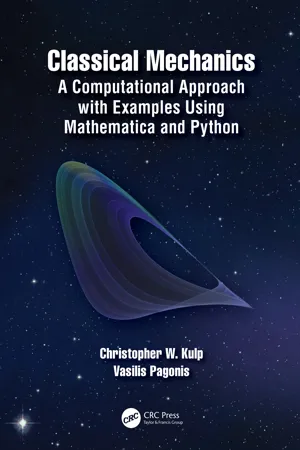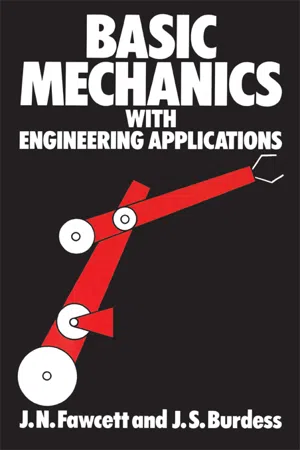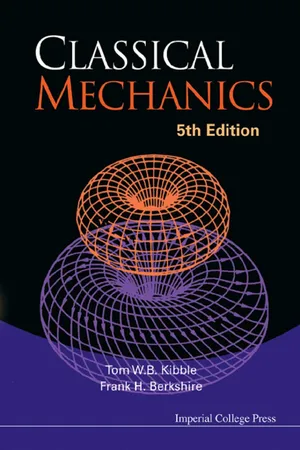Physics
Conservative Forces and Potential Energy
Conservative forces are those that do work on an object in a way that depends only on the initial and final positions, not on the path taken. Potential energy is associated with conservative forces and is the energy stored in an object due to its position or configuration. The change in potential energy is equal to the negative of the work done by the conservative force.
Written by Perlego with AI-assistance
Related key terms
Related key terms
1 of 4
Related key terms
1 of 3
10 Key excerpts on "Conservative Forces and Potential Energy"
- No longer available |Learn more
- Robert A. Pelcovits, Joshua Farkas(Authors)
- 2023(Publication Date)
- Barrons Educational Services(Publisher)
Conservative forces (e.g., gravity) are involved in reversible energy conversions, where we can get our kinetic energy back (thus, the energy at our disposal is “conserved”). While the kinetic energy is temporarily gone, the total energy is stored in the form of potential energy, energy due to the position or configuration of the system. Alternatively, nonconservative forces (e.g., kinetic friction) are involved in irreversible energy conversions; although total energy is always conserved, energy is converted to forms (most notably sound and heat) from which we cannot recover it.Summarizing,Conservative forces: kinetic energy ⇒ potential energy ⇒ kinetic energy Nonconservative forces: kinetic energy ⇒ sound, heat, etc. ⇒ cannot be easily recoveredWhen conservative forces perform negative work, removing kinetic energy from an object, the energy is stored in the form of potential energy. This is reflected mathematically in that every conservative force is associated with a potential energy function. Indeed, one definition of a conservative force is any force for which a potential energy function, U(x, y, z), can be defined such that the work done moving the object between any two points is the difference in the potential energy at those points:TIP Potential energy can only be defined for conservative forces.General definition of a potential energy functionThis directly reveals the following properties of conservative forces:1.The work done by a conservative force when an object moves between two points is independent of the path taken by the object and depends only on the location of the initial and final points (i.e., the work is path independent).2.Based on the above equation, when the starting and ending points of the motion are the same (i.e., the path is a closed loop), the net work must always be zero.Gravitational Potential Energy
To derive an expression for gravitational potential energy, we must calculate the work involved in an arbitrary displacement and use the equation W = −ΔU to determine the change in the potential energy. Because the net force is constant, the following equation applies:Unless stated otherwise, the +y-direction is generally taken to point up when dealing with gravitational potential energy. Therefore, the work done by gravity as the object moves from y1 to y2 - eBook - ePub
Classical Mechanics
A Computational Approach with Examples Using Mathematica and Python
- Christopher W. Kulp, Vasilis Pagonis(Authors)
- 2020(Publication Date)
- CRC Press(Publisher)
This can be easily generalized to two- and three-dimensional systems. A conservative force is one that depends only on a particle’s position F (r) and the work done by F (r) to move a particle from positions r 0 to r is independent of the path taken between the points. We can then define the potential energy to be: V (r) = − W (r 0 → r 2) = − ∫ r 0 r F (r ′) ⋅ d r ′ (5.5.1) where we have set a reference point r 0 such that V (r 0) = 0. The above definition works for our purposes because we have a conservative force. If the force was not conservative, then the integral in (5.5.1) would also depend on the path taken by the particle and would not be simply a function of r. Now suppose that a conservative force, F (r), moves a particle from a point r 0 to the point r 2 along two different paths. One path goes directly from the reference point r 0 to r 2, while the other path goes from r 0 to r 1 and then from r 1 to r 2. Because the work is conservative, the work done along the two paths is the same: W (r 0 → r 2) = W (r 0 → r 1) + W (r 1 → r 2) (5.5.2) Solving. for W (r 1 → r 2): W (r 1 → r 2) = W (r 0 → r 2) − W (r 0 → r 1) (5.5.3) W (r 1 → r 2) = − V (r 2) + V (r 1) (5.5.4) Or, the work done by the conservative force F (r) is related to the potential energy through the. formula: W (r 1 → r 2) = − [ V (r 2) − V (r 1) ] = − Δ V (5.5.5) Combining equation (5.5.5) with (5.5.1), we see that the work done by a conservative force along a closed-loop path must be equal to zero, since the change of potential energy along that path is zero. Combining the Work-Kinetic Energy Theorem (5.4.5) with (5.5.1), - eBook - ePub
- Robert Lambourne(Author)
- 2019(Publication Date)
- CRC Press(Publisher)
g . However, similar ideas apply to any system composed of parts that interact via conservative forces, whatever those forces may be. It will be true, for example, that each configuration of a system of charged particles that interact by means of electrical forces can be associated with a definite amount of electrical potential energy, and it is also possible to associate a definite amount of gravitational potential energy with each configuration of a system whose parts interact via the force of universal gravitation. Both the electrical force between charged particles and the universal gravitational force are conservative forces, so potential energy may be associated with either system. In fact, we can make the following general statement:The potential energy of a body is the energy associated with the position of that body relative to other bodies with which it interacts via conservative forces.Notice that although we speak of the potential energy ‘of a body’, and describe it informally as energy ‘by virtue of position’, it is really the energy of a system and it really depends on the configuration of the system. The gravitational potential energy of a stone increases when we move the stone away from the Earth, but it would increase just as much if we moved the Earth away from the stone. It is the separation of the Earth and the stone that is significant, not just the position of the stone.No matter which conservative forces cause us to introduce potential energy, we can always say that changes in potential energy are physically significant, and that the change in potential energy in going from some initial configuration to some final configuration is equal to the work done by those conservative forces in returning the system from its final configuration to its initial one. We can represent this in terms of symbols by writingΔ(2.15)E pot=E pot( final )−E pot( initial )=W cons(.final → initial)The subscript ‘cons’ is to remind us that it is only the work done by the conservative forces (such as gravitational or electrical forces) that is of any relevance. Any work you may do in changing the configuration, or any work done by dissipative forces such as those due to friction or air resistance, is irrelevant.Question 2.7 In your own words, briefly explain why it is possible to associate potential energy with a conservative force such as terrestrial gravitation, but not with a dissipative force such as that due to friction. (Hint : Start from the statement that potential energy is energy by virtue of position.) ■ - eBook - ePub
Newtonian Dynamics
An Introduction
- Richard Fitzpatrick(Author)
- 2021(Publication Date)
- CRC Press(Publisher)
U represents some form of potential energy.The previous discussion leads to the following important conclusions. First, it should be possible to associate a potential energy (i.e., an energy a body possesses by virtue of its position) with any conservative force-field. Second, any force-field for which we can define a potential energy must necessarily be conservative. For instance, the existence of gravitational potential energy proves that gravitational fields are conservative. Third, the concept of potential energy is meaningless in a non-conservative force-field (because the potential energy at a given point cannot be uniquely defined). Fourth, potential energy is only defined to within an arbitrary additive constant. In other words, the point in space at which we set the potential energy to zero can be chosen at will. This implies that only differences in potential energies between different points in space have any physical significance. For instance, we have seen that the definition of gravitational potential energy isU = m g z, where z represents height above sea level. However, we could just as well writeU = m g ( z −, where z0 is the height of some arbitrarily chosen reference point (e.g., the top of Mount Everest, or the bottom of the Dead Sea). Fifth, the difference in potential energy between two points represents the net energy transferred to the associated force-field when a body moves between these two points. In other words, potential energy is not, strictly speaking, a property of the body; instead, it is a property of the force-field within which the body moves.z 0)5.6 Hooke’s Law
Consider a mass, m, that slides over a horizontal frictionless surface. Suppose that the mass is attached to a light horizontal spring whose other end is anchored to an immovable object. See Figure 5.8 . Let x be the extension of the spring; that is, the difference between the spring’s actual length and its unstretched length. Obviously, x can also be used as a coordinate to determine the horizontal displacement of the mass. According to Hooke’s law, the force, f - eBook - ePub
Dielectrophoresis
Theory, Methodology and Biological Applications
- Ronald R. Pethig(Author)
- 2017(Publication Date)
- Wiley(Publisher)
4 Electrical Potential Energy and Electric Potential4.1 Introduction
An enduring memory for this author is of a filmed lecture given several times by the famous physicist, Richard Feynman, in which he used a ‘swinging ball of death’ to demonstrate the principle of conservation of energy. He took hold of a heavy brass ball suspended by a long chain and walked backwards with it until the chain was taut and the ball touched the end of his nose. He released the ball, allowing it to swing across the auditorium and over the heads of the students, who began gasping in horror when it gathered momentum on a return path back towards his face. Feynman stood still and remained so even as the gasps grew louder and more frantic. But of course, he was not at all concerned – he knew that the kinetic energy gained by the ball would not exceed the gravitational potential energy it had gained when lifted to touch his nose. On its return the ball would not smash into his face, but come to rest just in front of it before swinging back again. In doing this he illustrated the reversible conversion between potential and kinetic energy, which is a characteristic of a conservative force, as described more fully in Box 4.1. Examples of nonconservative forces include air resistance and friction. Their effect in reducing the kinetic energy of a body is not reversible. Feynman's ‘ball of death’ experienced frictional air resistance and this is why on its return path it came to rest just in front of his nose.On bringing the ball from its hanging-down, resting, position up to his nose, Feynman's hands exerted an equal but opposite force to that acting to accelerate the ball downward in the earth's gravitational field. This force is the weight mg of the ball, where m is the ball's mass and g is the acceleration due to gravity. Close to the surface of the Earth the gravitational force can be assumed constant. Lifting the ball a height h above its equilibrium position increased the ball's gravitational potential energy by an amount U = mgh. At the moment of releasing the ball its velocity v was zero and hence its kinetic energy 1/2(mv2 ) was also zero. Assuming negligible air resistance, when the ball executed its swing back down to its initial resting position it would at that moment have lost the added potential energy and converted all of it into kinetic energy. This increase in the ball's kinetic energy from its initial resting state was thus also equal to the work done on the ball by Feynman's hands. As explained in Box 4.1, this is an expression of the work-energy theorem, which states that the work done by the net force on a body is equal to the change in the body's kinetic energy. At any instant during its swinging back and forth, the algebraic sum of the ball's potential and kinetic energy remained constant. As the potential energy increased by a certain number of joules, the kinetic energy decreased by the same amount and vice versa - eBook - ePub
- J Jones, J Burdess, J Fawcett(Authors)
- 2012(Publication Date)
- Routledge(Publisher)
V represents the potential energy stored in a conservative system.The relationship between V and a conservative force F can be found by considering the work done by F when its point of application is displaced from a position (x, y) to a neighbouring position (x + δx, y + δy). Using eqn (5.3), the work done by the components of F is given byFrom eqn (5.15) the work done is alsoIf we now use the rules of partial differentiation, the value of V at (x + δx, y + δy) can be written asWhen eqn (5.18) is substituted into eqn (5.17) and the result equated with eqn (5.16) we haveThis result must be true for all values of δx and δy.Thus for F to be conservativeExample 5.3 The force due to gravity is an example of a conservative force. Consider the case shown in Fig. 5.14 . A particle of mass m is shown located at a point P1 (x1 , y1 ) in the vertical plane and acting on it is a vertical gravitational forceFIG . 5.14Let us suppose that while this force acts upon it the particle moves to a new position P2 (x2 , y2 ) along some arbitrary path C. Since we have chosen the direction of the axis OX to be horizontal, the horizontal component of the gravitational force is zero.The work done by the force mg is given by integrating eqn (5.3) asThe work done is therefore a function only of the final and initial positions of P and is independent of the path C.If we now compare eqn (iii) with eqn (5.15),The potential function V is in this case independent of x and may therefore be written asWe can now extend this result for a particle to a rigid body of total mass m. Let the particle Pishown in Fig. 5.15 be displaced vertically from yi1to yi2along some path.The work δWi done by the gravitational force acting on the particle of mass mi is thereforeFIG - eBook - ePub
- Tom W B Kibble, Frank H Berkshire(Authors)
- 2004(Publication Date)
- ICP(Publisher)
F. When the force is central, the angular momentum is conserved. Then the motion is confined to a plane, and the rate of sweeping out area in this plane is a constant.The use of these conservation laws greatly simplifies the treatment of any problem involving central or conservative forces. When the force is both central and conservative, they provide all the information we need to determine the motion of the particle, as we shall see in the following chapter.Lagrange’s equations are of great importance in advanced treatments of classical mechanics (and also in quantum mechanics). We have seen that they can be used to write down equations of motion in any system of co-ordinates, as soon as we have found the expressions for the kinetic energy and potential energy. In later chapters, we shall see that the method can readily and usefully be extended to more complicated systems than a single particle.Problems
1.Find which of the following forces are conservative, and for those that are find the corresponding potential energy function (a and b are constants, and a is a constant vector):(a)Fx = ax + by2 , Fy = az + 2bxy, Fz = ay + bz2 ;(b)Fx = ay, Fy = az, Fz = ax;(c)Fr = 2ar sin θ sin φ, Fθ = ar cos θ sin φ, Fφ = ar cos φ;(d)F = a ∧ r;(e)F = ra;(f)F = a(a · r).2.Given that the force is as in Problem 1(a), evaluate the work done in taking a particle from the origin to the point (1, 1, 0): (i) by moving first along the x-axis and then parallel to the y-axis, and (ii) by going in a straight line. Verify that the result in each case is equal to minus the change in the potential energy function.3.Repeat the calculations of Problem 2 for the force in 1(b).4.Compute the work done in taking a particle around the circle x2 + y2 = a2 , z = 0 if the force is (a) F = yi, and (b) F = xi. What do you conclude about these forces? (Use the parametrization x = a cos φ, y = a sin φ, z - eBook - ePub
- A. L. Stanford, J. M. Tanner(Authors)
- 2014(Publication Date)
- Academic Press(Publisher)
This chapter introduces one of the most important and perhaps the most far-reaching of all principles in the sciences—the conservation of energy. A conservation principle is a rule or a natural law that specifies that the value of a physical quantity does not change during the course of a physical process but remains constant. The quantity that does not change is said to be conserved. The simplicity of conservation principles makes them concise expressions of natural law and powerful tools of scientific analysis. Conservation of energy is only one of a number of conservation principles that students of science or engineering will encounter. The significance and the usefulness of these principles should become apparent to the student as they are used to analyze and interpret physical phenomena.Of course, we have not yet defined energy. This chapter will introduce several physical quantities and concepts that are necessary for the understanding of energy and its associated conservation principle. First we will define work and describe how it may be accomplished and calculated. Then we will briefly consider power, a quantity that is useful in many practical applications. Next we will encounter energy in its mechanical forms, namely, kinetic and potential energies, and see how these quantities are related to work. Finally, we will see how kinetic and potential energies are used to express the conservation of energy principle, the essential physical relationship of this chapter.5.1 Work
In the nonscientific world, work is often thought of in terms of some physical or mental effort. In physics, however, the term work is defined precisely. Doing work requires the use of force, and work on a body does not take place without displacement of that body. We will begin with a simple situation in which work occurs: work done by a constant force.Work by a Constant Force
Suppose a constant force F is applied to a particle that moves in a straight line, say along the x axis from x 1 to x 2 through a displacement of Δr = (x 2 – x 1 )î Δx î. The work done by the force F on the particle is defined to be the product of the magnitude of the displacement and the magnitude of that component of the force that is in the direction of the displacement. In Figure 5.1 the force F is applied to a particle at an angle θ measured from the x axis. As the particle is displaced by Δr = Δx î, the vector component of force in the direction of the displacement isFxî. Then the work W done by the force F on the particle in displacing it by Δr = Δx - eBook - ePub
Doing Physics with Scientific Notebook
A Problem Solving Approach
- Joseph Gallant(Author)
- 2012(Publication Date)
- Wiley(Publisher)
We started our discussion of energy by explaining how the ball you threw acquired its initial kinetic energy. You did positive work on the ball and increased its kinetic energy. The total work you did on the ball equaled the change in the ball’s kinetic energy.Now let’s answer the second question. When the ball stops at the top of its trajectory, where did all its kinetic energy go? While the ball was going up, gravity did negative work on the ball and decreased the ball’s kinetic energy until it was zero. To understand what happened to the kinetic energy, we need to think about forces.There are two kinds of forces, conservative forces and non-conservative forces. Both kinds of forces can do work, and the total work is the sum of the work done by both.(6.11)Both kinds of forces can change an object’s kinetic energy, but there is a significant difference. When a conservative force acts, the work done is stored as potential energy (PE). When a non-conservative force acts, the work done is not stored but converted into other forms of energy.Potential energy is the energy of position or location. Potential energy comes from a conservative force doing work on an object so that the energy is stored and available to be converted to kinetic energy. The “potential” in potential energy is the potential to acquire kinetic energy.The work done by a conservative force is recoverable, so you can get back any work you put in. The work over a closed path is zero for conservative forces. Two common examples of conservative forces are gravity and spring forces.Example 6.11You call this a work out?During a vigorous exercise session, you repeatedly lift and lower a 30 kg mass through a vertical distance of 1.5 m. How much work does gravity do when you lift the mass? Lower it? How much work does gravity do during one complete lifting and lowering?Solution.When you lift the mass, gravity exerts a constant downward force mg over a distance y in the opposite direction of the weight’s displacement. Use Eq. (6.4a) to create and Evaluate - eBook - ePub
Energy Storage
A New Approach
- Ralph Zito, Haleh Ardebili(Authors)
- 2019(Publication Date)
- Wiley-Scrivener(Publisher)
The history of the development of physical concepts is not the prime concern here, but some knowledge of their evolution does serve to bring more closely to our attention and scrutiny a better appreciation of terms that we employ daily. Sometimes it is necessary to begin understanding or developing a body of knowledge in order to make certain basic assumptions on an entirely intuitive basis. As scientifically unsatisfying as that may be, it is unavoidable at times. One could draw a weak comparison to plane geometry (Euclid) with regard to its various axioms and the declaration that parallel lines never meet. Even the concept of straight lines is rather intuitive in nature.Perhaps the best definition is that a force is required to change the motion of a body. Many problems arise in finding acceptable definitions for the basic parameters of physical science, namely, the abstract concepts of mass, time, force, and energy. However, we must learn to be satisfied with definitions that leave something to be desired in order to move on toward generating a working body of mechanics that enables us to design and build practical devices that serve our purposes.An interesting definition of energy comes from the Grolier Encyclopedia, which states:Energy can be measured in terms of mechanical work, but because not all forms of energy can be converted into useful work, it is more precise to say that the energy of a system changes by an amount equal to the net work done on the system … In classical physics, energy, like work, is considered a scalar quantity; the units of energy are the same as those of work. These units may be ergs, joules, watt-hours, foot-pounds, or foot-poundals, depending on the system of units being used. In modern science, energy and the three components of linear momentum are thought of as different aspects of a single four-dimensional vector quantity, much as time is considered to be one aspect of the four-dimensional space-time continuum … Energy exists in many different forms. The form that bodies in motion possess is called kinetic energy. Energy may be stored in the form of potential energy, as it is in a compressed spring. Chemical systems possess internal energy, which can be converted by various devices into useful work; for example, a fuel such as gasoline can be burned in an engine to propel a vehicle. Heat energy may be absorbed or released when the internal energy of a system changes while work is done on or by the system. (1993)
Index pages curate the most relevant extracts from our library of academic textbooks. They’ve been created using an in-house natural language model (NLM), each adding context and meaning to key research topics.
Explore more topic indexes
Explore more topic indexes
1 of 6
Explore more topic indexes
1 of 4









